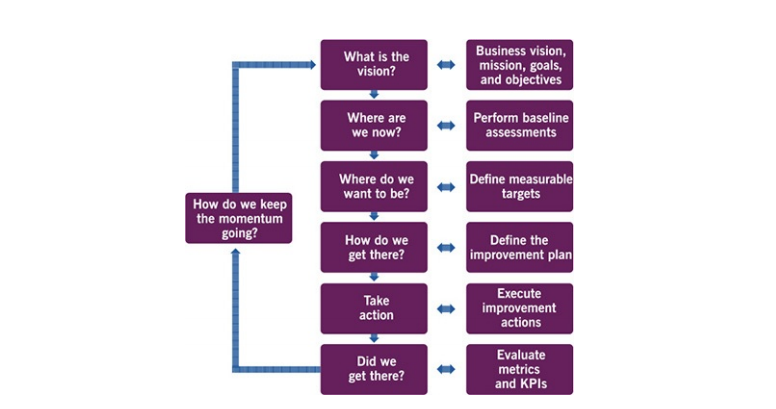Continual improvement takes place in all areas of the organization and at all levels, from strategic to operational. To maximize the effectiveness of services, each person who contributes to the provision of a service should keep continual improvement in mind, and should always be looking for opportunities to improve. The continual improvement model applies to the SVS in its entirety, as well as to all of the organization’s products, services, service components, and relationships. To support continual improvement at all levels, the ITIL SVS includes:
- The ITIL continual improvement model, which provides organizations with a structured approach to implementing improvements
- The improve service value chain activity, which embeds continual improvement into the value chain
- The continual improvement practice, supporting organizations in their day-to-day improvement efforts.
The ITIL continual improvement model can be used as a high-level guide to support improvement initiatives. Use of the model increases the likelihood that ITSM initiatives will be successful, puts a strong focus on customer value, and ensures that improvement efforts can be linked back to the organization’s vision. The model supports an iterative approach to improvement, dividing work into manageable pieces with separate goals that can be achieved incrementally. Diagram below provides a high-level overview of the ITIL continual improvement model.

It is important to remember that the scope and details of each step of the model will vary significantly based on the subject and the type of improvement. It should be recognized that this model can serve as a workflow, but it can also be used simply as a high-level reminder of a sound thought process to ensure improvements are properly managed. The flow seeks to ensure that improvements are linked to the organization’s goals and are properly prioritized, and that improvement actions produce sustainable results.
Logic and common sense should always prevail when using the continual improvement model. The steps of this model do not need to be carried out in a linear fashion, and it may be necessary to re-evaluate and return to a previous step at some point. Critical judgement should always be applied when using this model.





